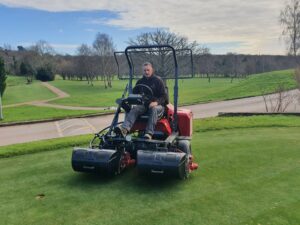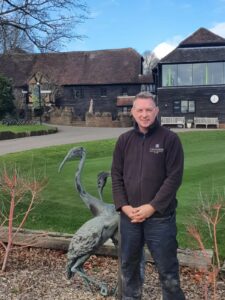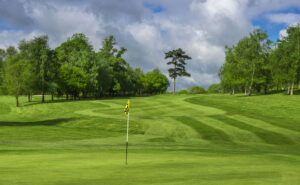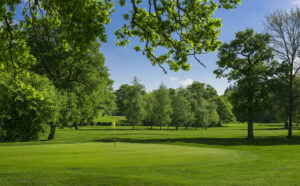Meet the group course manager: Chris Smith
Related Articles
Smith, the group course manager at Cranleigh Golf & Country Club and Chelsfield Lakes Golf Centre, details some recent projects the greenkeeping teams have carried out, how work has changed in the last two years and why giving up a job as an electrician to pursue a career in golf course maintenance turned out to be a great decision.
Can you give a description of your background and how long you’ve now been at the golf club?
My name is Chris Smith, I am the group course manager at Cranleigh Golf & Country Club in Surrey and Chelsfield Lakes Golf Centre in Kent. I first started at Cranleigh in January 2019, before progressing to group course manager in November 2021.
So, I grew up in Derbyshire and although I had already been introduced to golf when I was young and was starting to love it, I didn’t know whether there would ever be a career in it. As a result, I ended up training as an electrician in the late 1980s, before eventually deciding to make the move south in the mid-1990s. I have been a passionate golfer since I was a very young lad and it was this continued love for golf that eventually encouraged me to move into greenkeeping in 2008. I took a bit of a leap of faith and got a job at Southwood Golf Club as a greenkeeping assistant which was a complete change of pace and direction for me. Whilst I had started this job, I was also busy studying at Merrist Wood College to make sure I was learning the important theory behind the practical elements I was then putting together on the course.
From there, things really started to bloom for me in the industry and, just over a decade later, I was lucky enough to be offered my first head greenkeeping position at Cranleigh Golf & Country Club. I still play a lot of golf and have got my handicap down as low as six, so it is just the best thing for me that I have also made a career out of it, I feel very lucky.
I also feel very fortunate that I have a very supportive senior management team here at Cranleigh that encourages my ambition wherever possible in both standards and equipment. Obviously, having the right tools to do our job to a high level is a massive help, but also having a management team that recognises the benefit of this has been a real eye-opener into the importance of having a collective view on how to improve. I continue to be delighted to be a part of the excellent team here.
How has the course evolved in recent years? What projects have you carried out?
As part of a small team, I feel proud to say that we all work incredibly hard to put together great results and we look at every opportunity to take the course forward and make improvements. During my tenure, we have developed a close working relationship with Symbio, which has helped to ensure that the greens both here at Cranleigh, and at our sister club Chelsfield Lakes Golf Centre in Kent, have the correct soil biology. As most greenkeepers know, getting this correct can mean the difference between a great and good course and this has helped to protect against the winter conditions that, in the past, have stopped Cranleigh from having healthy plants and great playing surfaces throughout the year.
In terms of the projects we have conducted at Cranleigh, we have introduced an annual bunker and tee refurbishment programme which has already seen 20 bunkers refurbished and seven tee boxes completed. We see this ‘spot fixing’ as an important step to continuing to improve the experience for our members out on the course year-round. Our tree plantations have also been thinned, with canapes lifted to assist with the overall playability of the course, as well as our first fairway aeration last year which has already helped to reduce compaction across the course.
What were the biggest challenges you faced in lockdown?
The biggest challenge and, quite frankly, frustration during the lockdown periods was the overall inability to drive the course and its conditions forward. We had been on a great trajectory pre-lockdown with the work that was planned and being completed and, once the project work was delayed by a year in 2020, I feel like I speak for the team in saying we felt we had missed out on some big opportunities. With a very small team, we managed to keep the course maintained throughout each lockdown and I am proud of the work that we all put in to make sure that, when everything reopened, golfers returned to a brilliant-looking course. Now we are on the other side, and these projects are now being actioned, I really feel as though we have picked up where we left off, which is not only good for the course, but also for the team who can be far more motivated now that we can get back out there doing what we do best.
What growth has the club seen by way of members and play since then, and what challenges has this brought?
Golf membership at Cranleigh has grown about 10 per cent, which has been a particularly rewarding result for the work that not only the greenkeeping team has put in, but the whole team at the club. There has also been increased casual golf which hopefully reflects well on the quality of the course and how it has been improving in the local word of mouth. In terms of challenges, the volume of golfers is not a real issue, only the expectation of those that are playing the course regularly. We have had these great couple of years and have seen some really high standards of course conditions so now we just need to make sure that we maintain those going forward, no matter what.
Crane fly larvae has been a major issue on UK golf courses lately, has this impacted you and how have you dealt with it?
At Cranleigh this hasn’t been a big issue, we have been lucky to have avoided some of the problems that you can see at other courses around the country. It’s well recognised, of course, that the European ban on certain insecticides is a concern moving forward and I hope that, from a chemical perspective, there can be a solution worked out that conforms with the new rules and yet is less negative on the ecology of the area. For the small parts of the course where crane fly larvae have shown up, we will look to use more cultural practices that have been increasing in use since the ban, such as overnight groundsheets which, while maybe adding some extra work to the end of each of our days, really benefit the course.
What advice would you give to youngsters starting out and wanting to pursue a career in the profession?
I think it’s just a real shame that it appears the numbers coming into the industry are dwindling because, for me at least, it has been a great career choice and I couldn’t be happier that I decided to make the switch. When I look back and think about my own experiences and what I was told, the best advice I would give to youngsters is to get a basic greenkeeping qualification as soon as possible. This not only brings the job to life in helping to understand why certain things are done as they are, but it will also really assist in pursuing a career in this country or overseas.
Of course, the other part is experience. While you are young, gain as much experience as you can, whether that is doing work yourself, helping out on courses and taking a job somewhere, or just by listening and learning from some experienced course managers. There is so much to learn, especially from people who have been doing it a long time, with each manager offering different methods and ideas about what makes a great course. All this information will put them in a position to be able to undertake a senior role at a young age.
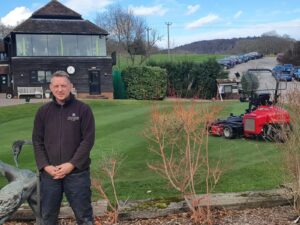
What changes do you think need to be made to benefit the industry sector and profession of the greenkeeper?
From the perspective of a course manager, I think that a lot of the necessary change is going to come from finding ways to make the position more appealing to youngsters. Of course, a large part of this is down to money and working hours – both of which are elements that are pretty unappealing when you first start out in the industry. Fixing this would, in turn, benefit people all the way up the chain including head greenkeepers and course managers, who will then be able to spend more time focussing on the course and its conditions and less about staffing. How you go about that is the major question, but I think providing young staff with a clear ladder of achievement when they first start, so that they can see how they can improve and work their way up to major positions like head greenkeeper with hard work, makes the idea of starting out in the industry a far more exciting prospect.



